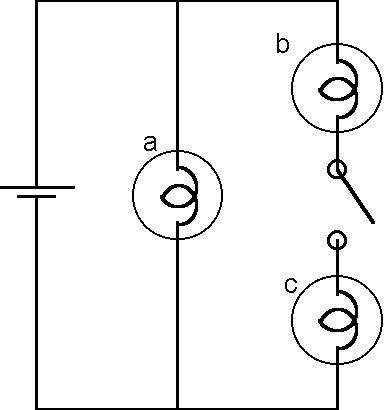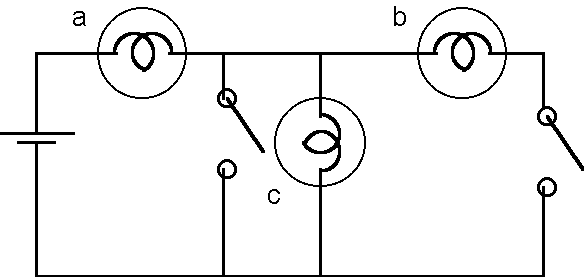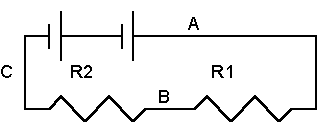
SIMPLE CIRCUITS
Throughout this lab, keep the circuit closed only long enough to, observe the necessary data.
Never connect the DMM in Current Mode in Parallel with any Resistor or Battery!
In this laboratory you will study simple circuits by measuring the current through and voltage across several circuits that consist of batteries and resistors. Measurements will be made using a digital multi-meter (DMM). As its name implies, it can measure voltage, current or resistance. For the Tenma 72-1020 DMM, there are different connections to be made before making a measurement. Incorrect connection in ohms or dc mA mode can cause a fuse to blow in the meter - which might end your experimentation for the day, so please be careful to be in the proper mode before making a measurement.
The wires for this laboratory have 'alligator clips' on the end that allow the circuits to be easily connected or disconnected. To prevent discharging your batteries or excessive heat in the resistors, leave one of the clips disconnected until you are ready to perform a measurement. If, at any time, you are in doubt, please ask your instructor. The steps for obtaining your data, along with tasks and questions to be answered, follow.

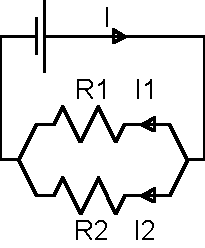
Connect the circuit shown below.
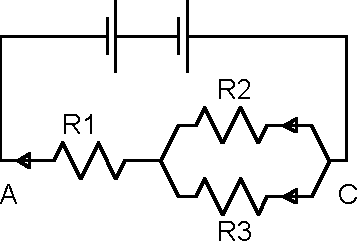
Using what you have now learned about series and parallel combinations of resistances predict the relative brightness of each of the bulbs in the circuit below. Assume all of the bulbs are identical. Explain your reasoning. Set up the circuit to check your predictions. If you cannot see a glow from bulbs 'b' and 'c' try using two cells in series.
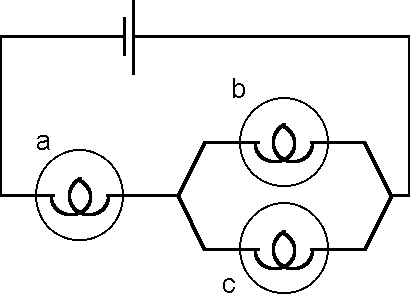
For each of the circuits below, predict the brightness of each bulb, with the switches open, as shown. Then predict how each bulb will change in brightness when the switch is closed. Support your answers with explanations. Set up the circuit and check your predictions. If you cannot see a glow from bulbs that you expect to glow, try using two cells in series. If a lamp is overly bright, disconnect the battery quickly - before the lamp burns out.
